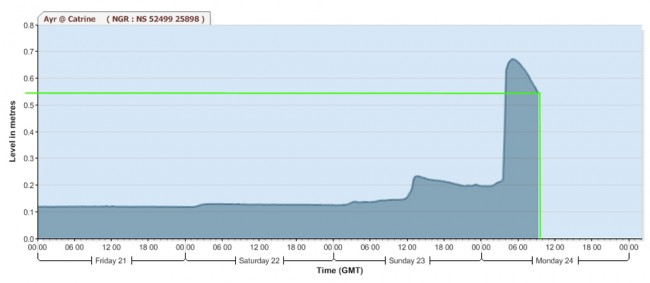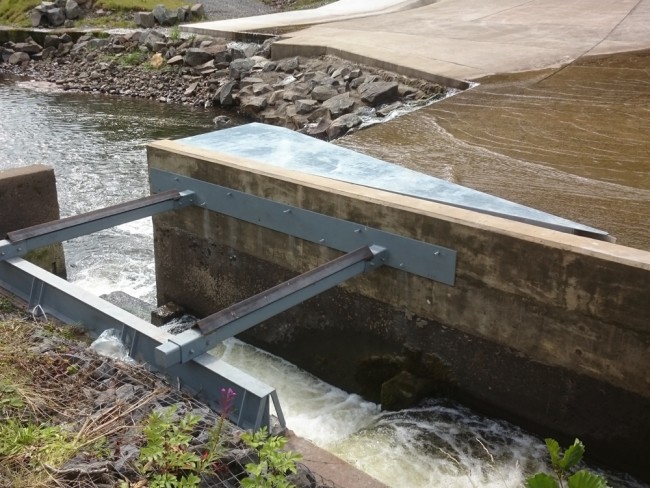The long awaited deflector at Catrine Dam is having it’s first test this morning with a small spate that is underway. We visited the site this morning just after 9.00am and the river was in good flow although nothing extraordinarily for the Ayr. The height on the SEPA hydrography at 9.30am was around 0.55m and falling.
We watched for an hour and never saw any salmon move which may not be too surprising as there a bit of colour in the water and as it starts to drop, fish already in the system will start to move upstream. I’ll revisit the dam later to see what’s happening.
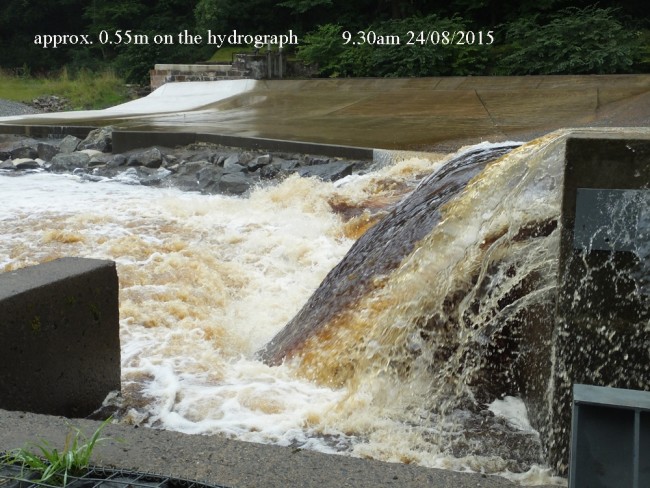
This morning’s spate was the first test for the deflector and there still appears to be significant turbulence at the entrance
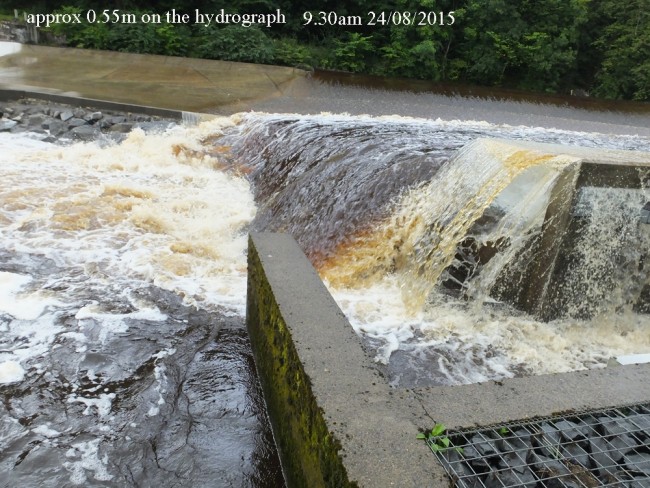
The bold has been pushed across the river towards the right bank creating more slack water behind the end wall of the fish pass. Perhaps a hole cut in this wall now would make access easier
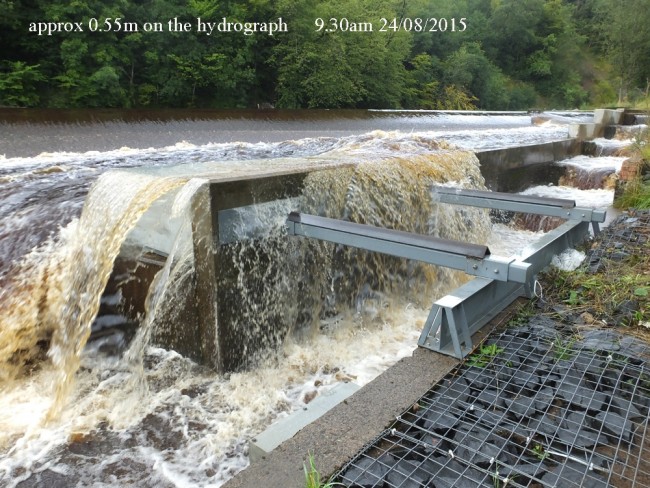
It would have been interesting to see how much water overtopped the side wall at the height of the spate early this morning but unfortunately we missed this.
Regarding the deflector’s performance, this will need monitored over a range of flows to see how fish access the pass but from our initial observations, the deflector doesn’t cut all the turbulence at the fish pass entrance and therefore, salmon and trout still only have a very narrow width of water (that remains pretty turbulent) available to them to access the fish pass. The huge boil that was below the dam last year has been pushed further towards the right bank increasing the area of slack water behind the bottom wall of the fish pass and it is here I expect salmon numbers to build as they wait to access the ladder as the flows reduce. An obvious solution may be to cut a hole in the end wall to allow fish to have a straight run into the fish pass in higher water but despite our previous support for this measure, CCT were reluctant to cut the wall. Of course they may now be willing to consider this measure but time will tell. First of all, fish behaviour requires proper assessment as they enter the pass and I’m not sure how this will be done but we will monitor this as much as we can.
